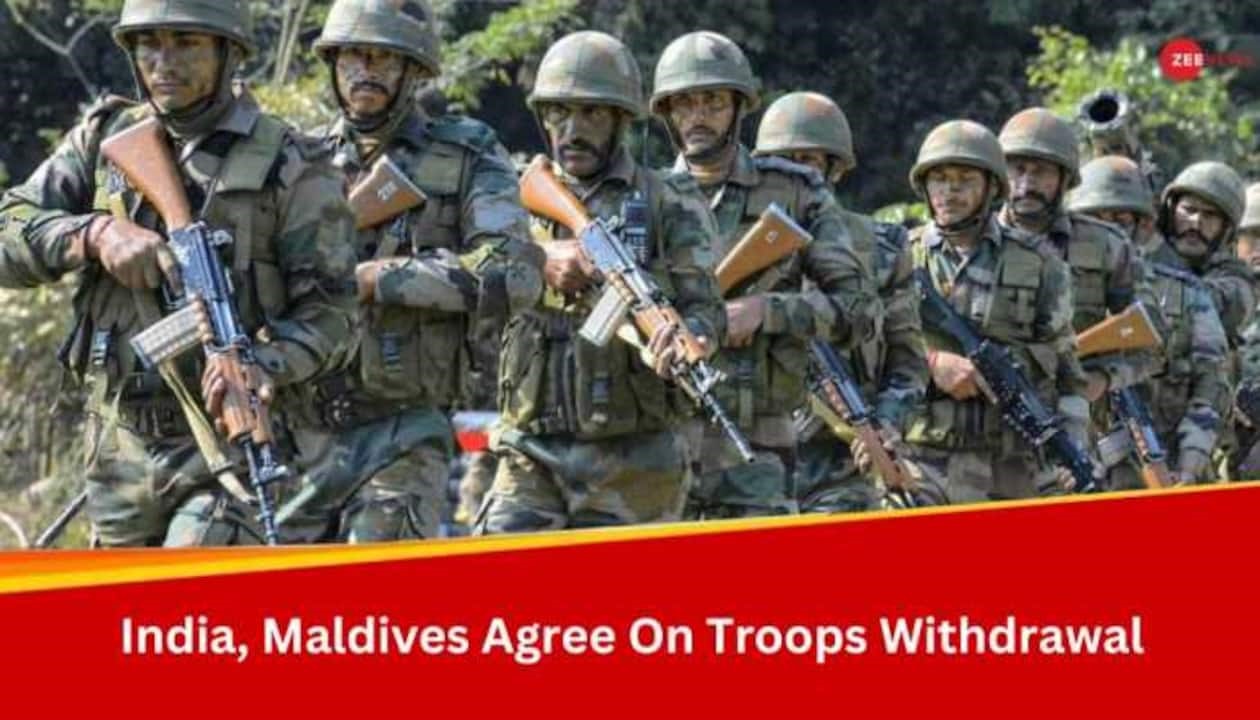Free Courses Sale ends Soon, Get It Now


Free Courses Sale ends Soon, Get It Now




Disclaimer: Copyright infringement not intended.
Context
How many Indian troops are in the Maldives?
A Brief Background
Factors behind Anti-India sentiments
Why are India’s troops in Maldives?
‘India Out’ campaign
All about India Out Campaign: https://www.iasgyan.in/daily-current-affairs/india-out-campaign
Five major factors behind the fear and suspicion
READ ALL ABOUT INDIA MALDIVES RELATIONS: https://www.iasgyan.in/daily-current-affairs/india-maldives-relations-5
Note:
Ever since Muizzu took up his presidency, there has been a clamour that Indian troops and military detachments leave the Maldives. The Indian military presence there is minimal, restricted to skeleton diplomatic staff, naval Dornier and advanced light helicopter (ALH) detachments, and a support team for the patrol craft gifted to the Maldivian Coast Guard. These can be pulled back very easily.
But
Why Maldives has much more to gain by keeping India on its side
There are three things that the Maldives government, whatever the political dispensation, would do well to recognise.
Its political, technological and economic heft will increase and create opportunities, not just for itself but also for its neighbours and partners.
India’s rich and famous could easily be one of the largest sections of tourists visiting the Maldives and the number of American and European tourists could reduce over time.
Closing Remark
|
PRACTICE QUESTION Q. Examine the strategic advantages and mutual benefits for the Maldives in maintaining a strong alliance with India. Considering geopolitical, economic, and security dimensions, analyze why the Maldives stands to gain significantly by fostering a cooperative relationship with India. Highlight key factors that contribute to the strategic importance of this alliance and potential avenues for further collaboration that would serve the interests of both nations. Model Answer: Maintaining a robust alliance with India holds substantial advantages for the Maldives across multiple dimensions—geopolitical, economic, and security. 1. Geopolitical Stability: India's regional influence and diplomatic standing provide the Maldives with a shield against external pressures. A strong alliance with India contributes to the Maldives' geopolitical stability, safeguarding its sovereignty in a region marked by complex power dynamics. 2. Economic Cooperation: Collaboration with India opens doors to economic opportunities for the Maldives. India is a significant economic partner, offering avenues for trade, investment, and development assistance. Joint projects and economic initiatives contribute to the Maldives' economic growth and resilience. 3. Security and Defense: India's security assistance and military cooperation enhance the Maldives' defense capabilities. Given the maritime challenges in the Indian Ocean, joint efforts contribute to maritime security, counter-terrorism, and disaster response, ensuring the Maldives' safety and stability. 4. Regional Connectivity: India's strategic location and infrastructure projects, such as the development of ports and connectivity initiatives, provide the Maldives with enhanced regional connectivity. This connectivity can boost trade, tourism, and people-to-people exchanges, fostering economic and cultural ties. 5. Climate Change and Environmental Cooperation: Both nations face challenges related to climate change and environmental issues. Collaborative efforts between India and the Maldives in areas such as renewable energy, sustainable development, and climate adaptation can address common concerns and contribute to global environmental goals. 6. Diplomatic Support: India's influence in international forums can be leveraged for the benefit of the Maldives. A strong alliance ensures diplomatic support, enabling the Maldives to address global challenges and advocate for its interests on the international stage. 7. People-to-People Ties: Cultural and educational exchanges strengthen people-to-people ties, fostering understanding and goodwill between the citizens of both nations. This soft power dimension of the alliance enhances the overall relationship. In conclusion, the Maldives has much to gain by keeping India on its side. The strategic advantages span geopolitical stability, economic growth, security cooperation, regional connectivity, environmental initiatives, and diplomatic support. Nurturing and expanding this alliance with India not only serve the immediate interests of the Maldives but also contributes to the broader stability and prosperity of the Indian Ocean region. |










© 2024 iasgyan. All right reserved